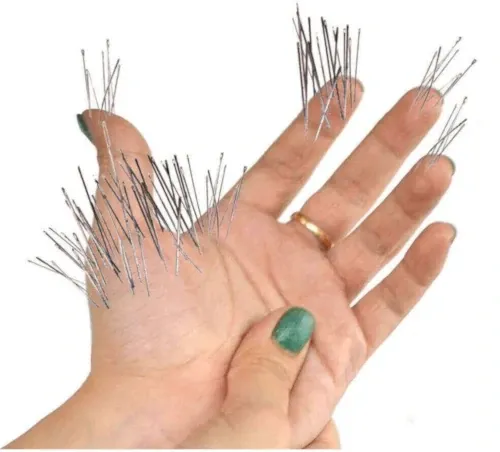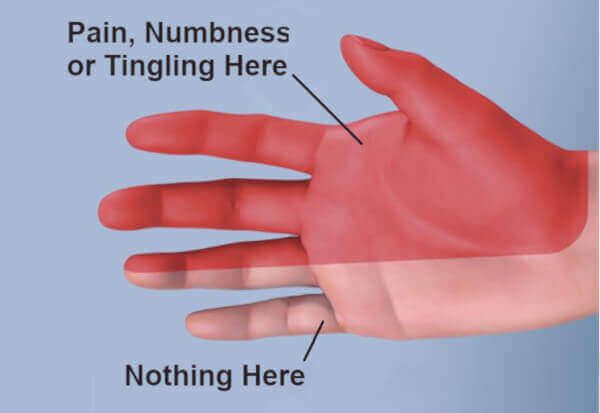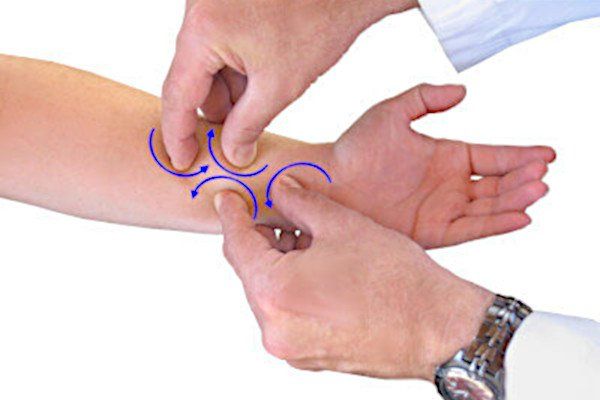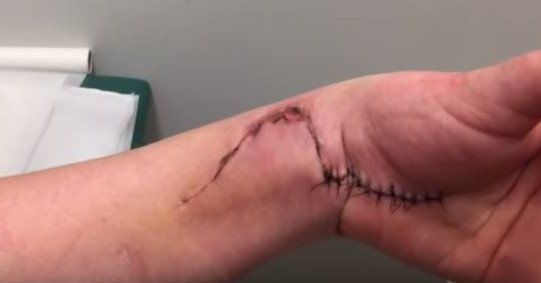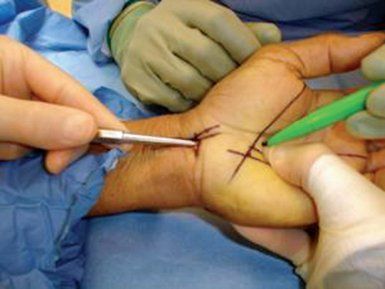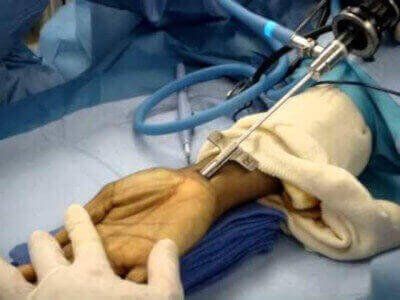Guide to Endoscopic Carpal Tunnel Surgery
If you have
symptoms of carpal tunnel syndrome then your doctor probably advised having endoscopic carpal tunnel surgery. This has become the "go-to" type of surgery to relieve carpal tunnel. In fact, carpal tunnel surgery is now the fastest growing procedure performed in the United States. Over a quarter million such surgeries are performed annually.
Carpal tunnel is a widespread problem
Carpal tunnel syndrome is an ever-expanding problem around the world. It's thought that the computer keyboards and mobile phones of modern life are contributing to the problem.
Indeed, the more developed the nation, the higher the
incidence of carpal tunnel syndrome. While there's no scientific data linking any particular activity to the cause of this condition, it's on the rise nonetheless.
The condition is more likely to occur in
women. In fact, being female is one of the major risk factors. Another risk factor, pregnancy, means that pregnant women have a 50% chance of developing it. (That's 20 times higher than normal.)
Other risk factors include having a
close family member with it, or a history of rheumatoid arthritis, hypothyroidism,
obesity, or
fibromyalgia. Also, if you're
emotionally stressed, smoke or had a wrist injury then your chances increase dramatically.
How does carpal tunnel syndrome happen?
The condition known as carpal tunnel syndrome is actually a problem with a nerve in your hand. More specifically, it's a neuropathy (disorder) of the
median nerve.
This nerve sends signals to the brain about touch, pain, pressure, temperature, etc. It runs all the way down the arm to the fingertips.
The problem occurs when the median nerve passes through the wrist joint.
This is a bottleneck. Through this same passageway run the thick
flexor tendons of your forearm. They're the ropy structures which curl your fingers into a fist.
When we overwork our tendons, tiny rips and
adhesions form on the tendon's surface. This causes irritation. And like any tissue, irritation makes the tendons inflame and swell with fluid.
But in the bottleneck of the wrist joint, such swelling causes big problems for the median nerve. Irritation makes the tendons swell with more and more fluid. As they do, they
push on the nerve with a huge compressive force. In fact, they produce such great fluid compression that the nerve eventually gets
crushed by the tendons.
That nerve crushing produces every symptom of carpal tunnel syndrome.
What are carpal tunnel symptoms?
As the median nerve is crushed by the swollen tendons, it sends signals to the brain in the form of "sensations". These sensations are the
symptoms
of a nerve crush - and collectively the sensations are called
carpal tunnel syndrome.
These sensations or symptoms of carpal tunnel syndrome vary from person to person. They generally include:
These symptoms can be felt in the fingers or palm. The thumb and first finger are usually worse than the other fingers. But the little finger is never affected.
When carpal tunnel syndrome first appears, most people feel one or more of these sensations when they're trying to sleep. Often, patients wake up feeling the need to shake out the numbness. Or else they need to rub out the pain.
Also, patients may feel their hand is weak or clumsy. They notice dropping things like cups or glasses. Tying a shoelace or picking up coins feels clumsy.
As time goes on and the condition progresses, the symptoms also begin to appear during the daytime. In addition, they usually increase in intensity. Many people report electric shocks shooting upward from their fingers or hand. Numbness, tingling or pain may radiate up to the elbow.
A doctor can diagnose you with carpal tunnel syndrome using
provocative tests.
Tapping or pushing your wrist may provoke symptoms, and this is positive for having the condition. You can perform these identical tests on yourself to determine if you have carpal tunnel syndrome.
See the instructions here.
How is carpal tunnel syndrome treated?
There are essentially 2 forms of carpal tunnel treatment;
nonsurgical
and
surgical. Before discussing them, it's important to understand there is
no cure for carpal tunnel syndrome. You merely treat the symptoms. But some treatments are better than others.
Nonsurgical treatments
As the name suggests, nonsurgical treatments focus on relieving carpal tunnel symptoms without surgery. Some nonsurgical remedies work better than others.
The best and most reliable nonsurgical remedies for
mild or moderate symptoms are rest,
nocturnal bracing, and
stretching exercises. Usually, these techniques work best when symptoms are just beginning.
For moderate or severe symptoms, more aggressive nonsurgical therapy is required. This is called
myofascial release massage. It's a process that breaks up adhesions to reduce tendon swelling. It has a high effectiveness rate and can eliminate symptoms permanently.
Surgery
Surgery attempts to relieve pressure on the median nerve by cutting a
ligament holding the wrist bones together. As the wrist bones snap apart, the pressure on the nerve is reduced.
Of course, surgery doesn't address the
source
of the tendon swelling, which is adhesions on the tendons. This is why surgery provides relief in only about
50% of patients by year two. In the other 50%, adhesions return again -- and so do the symptoms.
Two basic types of surgery are used to access the ligament and cut it;
open
and
endoscopic (double or single portal) methods. Both methods have the same goal (to cut the ligament).
Open Surgery Method
The open method (technically called
open carpal tunnel release surgery) requires using either general or local anesthesia. The surgeon then makes a 2-3 inch long incision in your palm. With the wrist area completely exposed, the surgeon can then safely cut the ligament.
The advantage of this technique is that the surgeon doesn't have to guess about anything he or she sees. The surgeon can clearly identify the other delicate structures (nerves and blood vessels) and avoid damaging them with the scalpel or scissors.
The disadvantages of this technique are two-fold. First, there is a lot of
postsurgical pain due to the extensive tissue interruption on the hand. Second, also due to the extensive tissue damage, it means more hand strength is lost. This will require more lengthy
aftercare and more involved hand rehabilitation.
A
mini open carpal tunnel release surgery may also be used. Using local anesthesia, the process is identical to the standard open method. But in this instance, an incision of only 1 inch long is made. This is less traumatic and therefore reduces the post-surgical problems and
recovery we have with a longer incision.
Endoscopic Surgery Method
Compared to the open method, endoscopic carpal tunnel surgery is far less traumatic. The technique and consequences are summarized in the separate section below.
Endoscopic carpal tunnel surgery
The endoscopic method is a newer operative technique that many surgeon are learning and using. Compared to the open method, it requires advanced skills as well as specialized surgical tools.
Essentially, there are
two types of endoscopic carpal tunnel surgery;
single portal
and
double portal. Both aim to accomplish the same thing: to cut the ligament holding the wrist bones together. Doing so frees up the median nerve.
Double portal endoscopic carpal tunnel surgery
Single portal endoscopic carpal tunnel surgery
Risks of endoscopic carpal tunnel surgery
Even though there's less trauma than the open method, endoscopic carpal tunnel surgery isn't without risks and potential
complications.
All surgical methods (open, single portal, double portal) carry the following risks:
- Reaction to
anesthesia
- Infection
- Stiffness and decreased mobility
- Varying degrees of pain
- Hand weakness
Other risks and complications are similar between the three methods. But in endoscopic carpal tunnel surgery, they occur at a greater rate compared to the open method.
The main problems are
lacerations to adjacent structures. These structures include:
- Either the median, ulnar or digital nerves: this may result in weakness, loss of feeling or hypersensitivity.
- Blood vessels: this may result in
necrosis (tissue damage) causing weakness, pain or decreased mobility.
- Tendons: this can produce weakness and
tendinopathy.
Conclusion
Endoscopic carpal tunnel surgery is the newer technique to manage this disorder. There are two types: single and double portal techniques. The main advantages of these two operative procedures are they result in less pain and recovery time. But the main disadvantage is they pose more potential risks.



